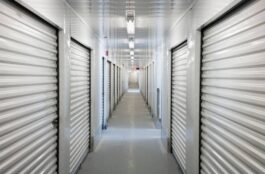Mold is a common yet serious issue affecting any part of your home, leading to many potential health consequences. Certain mold-damage symptoms are usually overlooked, allowing mold colonies to flourish in hidden spots; they only need moisture and material to feed on.
Understanding Potential Mold Issues
Mold problems in your home are often an unseen enemy, presenting health risks and damage to your beloved home. They start as tiny spores that float in the air. When these spores land on a moist surface, they grow, producing allergens and irritants, potentially causing allergic reactions.
Allergy flare-ups due to mold are common and may lead to health problems such as persistent coughing, sneezing, and eye irritation. Some molds, known as toxic molds, release a harmful substance called mycotoxin, increasing health risks even more.
Identifying Hidden Signs of Mold Growth
Identifying mold problems requires a keen eye for detail and a good understanding of what to look out for. One of the primary signs is a change in air quality, including a rotten smell in the house or a musty odor. The mold may also discolor walls, causing them to warp and create dark rings or spots on ceilings. You may notice spotted or discolored clothing and contaminated carpets as well.
Common Indications of Mold Damage
Mold damage can manifest in many ways. These indications are often overlooked but are clear warning signs. These include:
- Stained, speckled, or faded textiles such as clothes and carpets
- Walls showing signs of damage, with warping paint or wallpaper
- Bathroom tiles are becoming tarnished in the continually moist environment.
- Health symptoms include a persistent cough or cold, escalated allergic reactions, breathing difficulties, and potential for asthma.
Additionally, hidden mold spots are often problem areas. Professionals can assist with thorough mold removal, helping to minimize the health risks associated with mold exposure.
Furniture and Mold Growth
Furniture – another victim of mold damage. Mold growth in furniture, especially upholstered ones or pieces made from porous materials, is common. Mold can settle in the crevices and fabric, breaking down material and leaving unpleasant stains and odors.
Damage from Water Leak: Water Heater and Mold Issue
Areas with frequent water usage, like around the water heater, are highly susceptible to mold growth. The hidden and confined space around a water heater makes it a perfect place for mold spores. You must inspect this area frequently to prevent extensive water damage and mold growth.
Air Conditioners: A Potential Mold Issue
Air conditioners are another potential host for mold growth. Since they naturally create a lot of moisture, an air conditioner mold issue can quickly escalate if not appropriately handled. Cleaning, servicing, and using high-efficiency particulate air (HEPA) filters can help prevent mold proliferation in your AC units.
Significant Factors: Water and Fire Damage Restoration
You can protect your property from further damage and prevent mold growth through property damage restoration and repair. Water and fire damage restorations are crucial in ensuring the safety and cleanliness of your home. A damp, wet environment is a breeding ground for mold growth, so it’s necessary to dry out and restore areas impacted by water or fire damage quickly and professionally.
Room-Specific Signs of Mold Damage
Identifying room-specific mold problems requires a detailed inspection of spots susceptible to moisture, such as the kitchen, bathroom, basement, and attic. These rooms often have hidden corners and spaces where mold colonies can develop unnoticed.
Mold Results from Previous Water Damage Events
Mold resulting from previous water damage events is all too common. Whether the root cause was a leaky roof during a storm, burst pipes, or flooding, swift and proactive measures against mold are essential. Failure to thoroughly dry out and treat any affected areas can lead to mold growth hidden under the section where the initial water damage occurred.
Solutions for Mold Remediation
Overcoming mold issues could involve do-it-yourself mold removal techniques for minor issues and professional remediation for larger or deep-rooted problems. Solutions for mold remediation should address the visible mold and the root cause of the issue (commonly lurking moisture). Alongside these remediation efforts, practicing good cleaning habits and maintaining good indoor air quality will reduce the likelihood of future mold problems.
Mold Inspection Tips and Measures to Prevent Growth
Keeping your home free from mold isn’t just about cleanliness; it’s about maintaining a healthy environment. Below are some tips for conducting an efficient mold inspection and implementing measures to prevent its growth:
- Inspect Hidden Spaces: Regular checks in areas like the basement, attic, water heater closets, and under sinks can help detect mold colonies.
- Proper Ventilation: Keep your home well-ventilated, especially moisture-prone areas like the kitchen, bathroom, and laundry room.
- Quick Leak Repairs: Promptly fixing leaks in your roofs, walls, or pipes reduces moisture and prevents mold growth.
- Dehumidifier Use: Dehumidifiers can reduce moisture levels in your home, making it less conducive for mold to thrive.
- Frequent Cleaning: Regular cleaning, especially in damp areas, will prevent mold spores from settling and multiplying.
Keep in mind that mold can grow almost anywhere there’s enough moisture. If you suspect an issue, take immediate action. Mold management should involve early detection, containment, thorough cleanup, and measures to prevent future growth. Put on your detective hat, stay vigilant, and don’t hesitate to use professional services. Your home’s safety and your family’s health are worth it.
Conclusion
Recognizing overlooked signs of mold damage is crucial for safeguarding your home and health. This involves understanding mold issues, identifying hidden growth, and noting potential damage from previous water incidents. Vigilance is key, with professional mold remediation being necessary when required. Timely action coupled with regular maintenance can prevent mold threats. Mold management encompasses detection, removal, and prevention to ensure a safe and healthy living environment.

